George Lambert (1873-1930), artist, was a jackeroo before moving to Sydney to work as an illustrator and attend art school. After winning the first NSW Society of Artists’ Travelling Scholarship in 1900 he studied and worked in Paris and London for many years, becoming an Associate of the Royal Academy. The only Official War Artist of World War I to be appointed to the rank of Honorary Captain, he produced immense, violent paintings of the landing at Gallipoli and the charge of the Light Horse at Beersheba. Returning to Sydney in 1921, he became a major active influence on contemporary art, relentlessly pursued by artists who wanted him to exhibit with them, dealers who wanted his works and clients who wanted portraits and commissioned pieces for their houses. Further exhausted by recurring symptoms of malaria, he spent what was left of his energy working on sculptures, including the Henry Lawson Memorial that stands in the Domain, the Geelong War Memorial and the Tomb of the Unknown Soldier for St Mary’s Cathedral. He died of heart failure while attending to his horse at Cobbity, south of Sydney. Some of Lambert’s works, including Across the Black Soil Plains (1899) A Sergeant of the Light Horse (1920) and The Squatter’s Daughter (1923-4) number amongst the key twentieth-century representations of aspects of Australian experience; his 1924 Self-portrait with gladioli, painted in Sydney to send to the Royal Academy in London, is a destination work for the National Portrait Gallery.
Collection: National Portrait Gallery
Purchased 2015



On one level The Companion talks about the most famous and frontline Australians, but on another it tells us about ourselves.
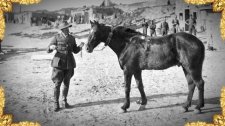
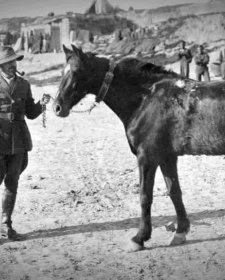
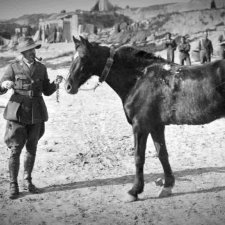
An examination of the life and times of George Lambert through the gesture and pose in his self portrait.
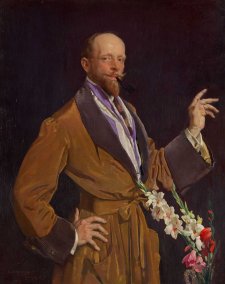
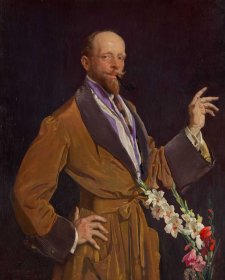
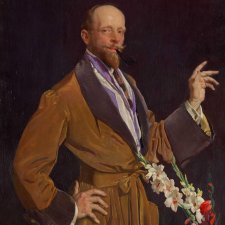
Andrew Sayers discusses the real cost of George Lambert's Self portrait with gladioli 1922.